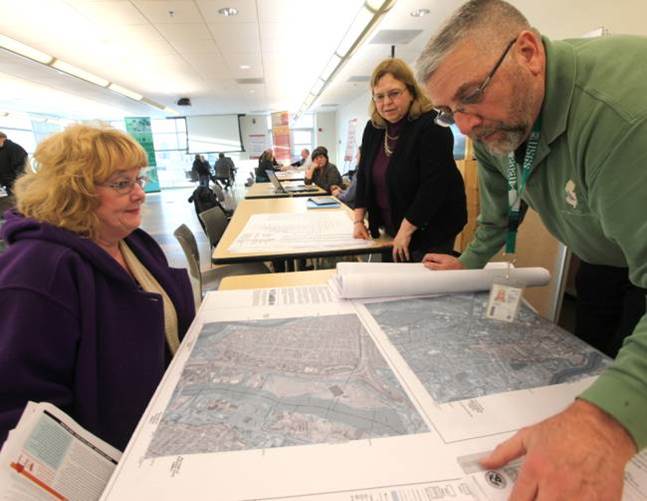Issue
Since Post-tropical Cyclone Sandy in 2012, Jacques Cousteau National Estuarine Research Reserve and its Rutgers University partners have been spearheading an initiative to help coastal communities in New Jersey improve upon their resilience planning. Following the storm, communities recognized the need to be better prepared for both larger and smaller hazards.
Process
In the early stages of this effort, the New Jersey Resilient Coastal Communities Initiative and the Jacques Cousteau Reserve worked with coastal New Jersey communities to help them start conversations about risks, vulnerabilities, and ways to tackle their impacts through existing plans, programs, and partnerships. They used maps and other resources to help enable discussions about participants’ own experiences and knowledge. To expand the features provided by the local mapping platform, the New Jersey partners used code from NOAA’s Coastal Flood Exposure Mapper to further customize and update their own coastal hazard mapping tool, NJFloodMapper. This newer NJFloodMapper version includes total water levels (0-20 feet), sea level rise (0 to 10 feet), and sea level rise mapping confidence (0 to 10 feet) data from NOAA’s Digital Coast, along with more localized data, to meet the needs of New Jersey communities. A more recent addition to the NJFloodMapper enables users to customize their own viewer by incorporating additional map services to fit their needs. Additionally, the tool is now integrated with New Jersey MyCoast, which incorporates crowd-sourced geolocated flood images. Along with other state-specific adaptation planning tools, NJFloodMapper can be found online at NJAdapt.org.
Impact
This customized tool with the addition of the geolocated flood images enables New Jersey communities to visualize real, on-the-ground flooding, as well as future flood risks and vulnerabilities. This tool provides critical resources that communities and coastal decision-makers need to develop resilience plans and make more-informed land use decisions with future considerations in mind. (updated 2022)

